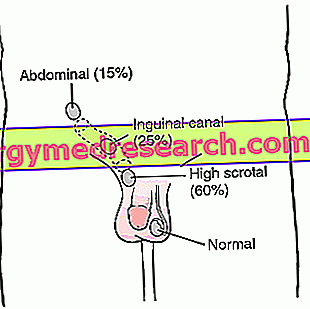Related articles: Gestational diabetes
Definition
Gestational diabetes mellitus (DMG) is a pathological condition characterized by variable glucose intolerance, which occurs for the first time during pregnancy.
This happens because the hormonal changes that occur during gestation can make the cells less responsive to the action of insulin, a substance synthesized by the pancreas that has the task of regulating the concentration of glucose in the blood.
In most cases, there is an increase in fasting blood glucose or after meals in the second trimester. Only in a minority of women, hyperglycemia is observed already in the first weeks of pregnancy, often due to a pre-existing type 1 (insulin-dependent) or type 2 (non-insulin-dependent) diabetes not diagnosed before.
The risk of developing gestational diabetes increases in the presence of overweight and / or obesity, a first degree familiarity for diabetes (parents, brothers or sisters) and an age equal to or greater than 35 years. Other factors that can predispose to the condition include precedents of management diabetes and belonging to ethnic groups at greater risk (South Asia, the Caribbean and the Middle East).
Most common symptoms and signs *
- Miscarriage
- Arthrogryposis
- Asthenia
- Great child for gestational age
- Dyspnoea
- Hunger
- Glycosuria
- Hydrops Fetal
- insulin Resistance
- Hyperglycemia
- Hypertension
- Hypoglycemia
- Jaundice
- Nausea
- oligohydramnios
- Weight loss
- Polycythemia
- Polyhydramnios
- pollakiuria
- Proteinuria
- Intense thirst
- Blurred vision
- He retched
Further indications
Gestational diabetes is manifested by not very evident symptoms and often goes unnoticed, however it can have important medical implications both for the future mother and for the child.
The condition is characterized by an excess of glucose in the blood (hyperglycemia) which can be associated with fatigue, unjustified increase in thirst and frequent urge to urinate. Other signs include frequent infections (such as cystitis and candidiasis), nausea and vomiting (insignificant symptoms, as very common in pregnancy) and visual disturbances. Poor control of a pre-existing diabetes or gestational form during organogenesis (up to about 10 weeks of gestation) increases the risk of congenital malformations, pre-eclampsia, miscarriage or premature birth.
Later in pregnancy, gestational diabetes promotes excessive growth of the child (fetal macrosomia), which is larger than the gestational age and at birth has a weight exceeding 4000-4500 g. This can result in complications at the time of delivery (such as dystocia of the shoulder and other traumas), necessitating a cesarean or induction before the end of gestation, usually around the 38th week.
Newborns are at risk of respiratory distress, hypoglycemia, hypocalcemia, hyperbilirubinemia, perinatal polycythemia and hyperviscosity syndrome. Furthermore, women with DMG have an increased risk of developing type 2 diabetes mellitus later in their lives.
Careful monitoring of blood glucose levels before, during and after pregnancy minimizes the maternal and fetal risks associated with gestational diabetes, including congenital malformations. For this reason, a glucose tolerance test (OGTT) at 24–28 weeks of gestation is usually recommended for all women with risk factors or a fasting plasma glucose level above 126 mg / dL or a random blood glucose over 200 mg / dL.



